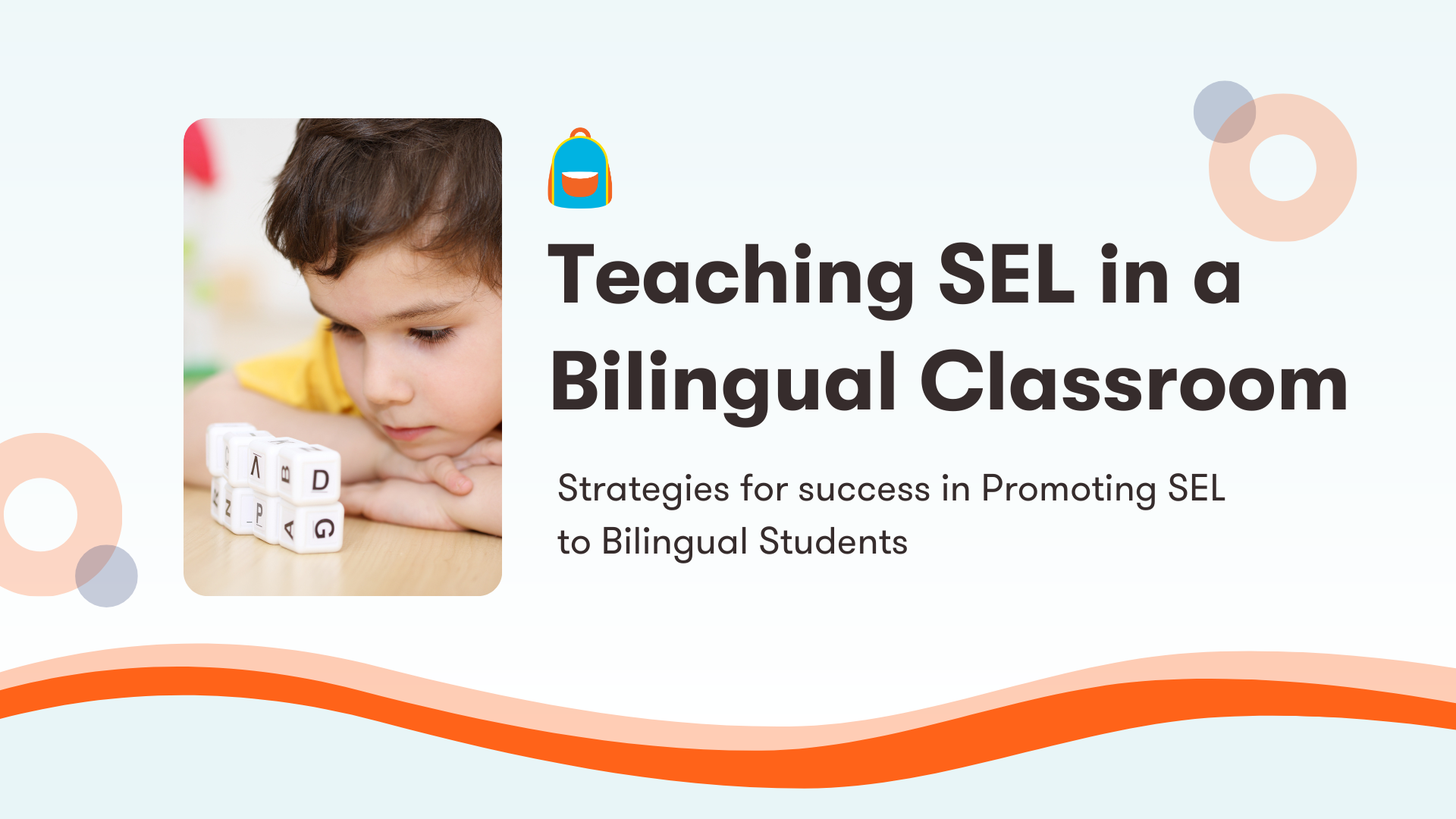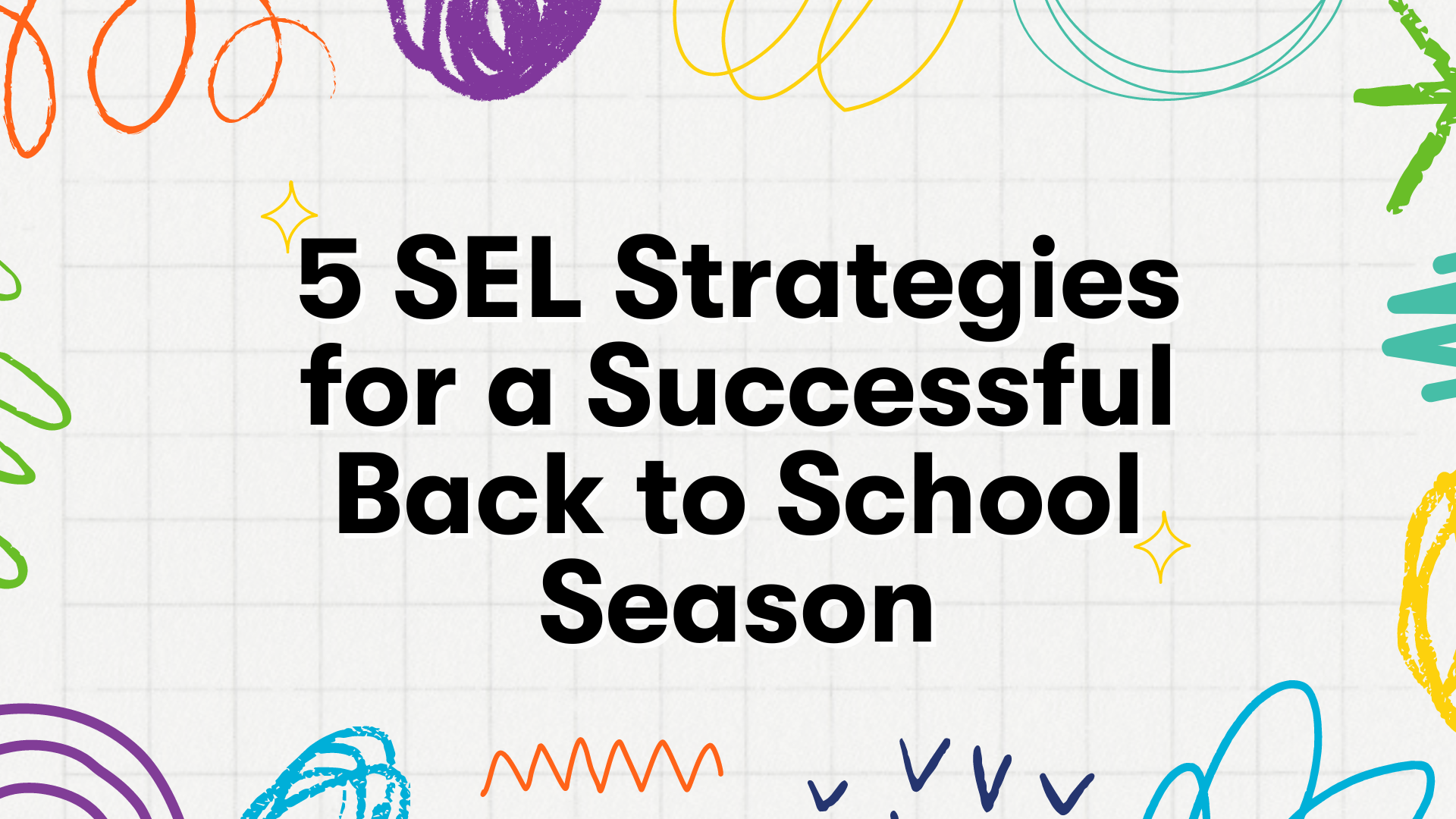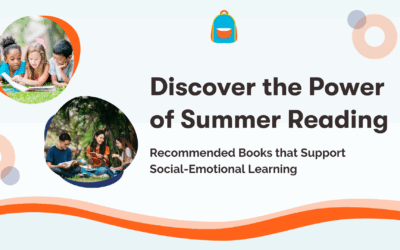Hello Peekapak friends!
Bilingual classrooms are a vibrant and diverse environment, bringing together students from different cultures and language backgrounds. But teaching social-emotional learning (SEL) in these settings can pose unique challenges. How do you promote SEL skills and emotional vocabulary when students are navigating multiple languages and cultural contexts? In this blog post, we’ll explore some innovative strategies for promoting SEL in bilingual classrooms, drawing on the latest research and practical tips from experienced educators.
In this blog post, we will delve into some strategies for how you can promote SEL in a bilingual classroom, techniques for teaching emotional vocabulary in multiple languages, the benefits of bilingualism for SEL development, and ways to involve families and communities in promoting SEL.
Strategies for promoting SEL in a bilingual classroom:
- Culturally responsive teaching: Incorporate students’ cultural backgrounds and experiences into SEL lessons. Teachers can use examples from different cultures to teach empathy, respect, and inclusivity.
- Multilingual instruction: Use a variety of languages in SEL instruction to promote language development and support students’ cultural identities. Teachers can use translation tools or peer support to facilitate communication in multiple languages. Peekapak offers two levels of their storybooks in Spanish, as well as home updates to ensure families are in the loop of their child’s learning.
- Differentiated instruction: Tailor SEL instruction to meet the students’ language proficiency levels and learning styles. Teachers can use visual aids, hands-on activities, and scaffolded instruction to support understanding and engagement.
- Positive teacher-student relationships: Build strong relationships with students to promote a safe and supportive classroom environment. Teachers can check in with students daily, either verbally or in writing, to ensure they feel supported.
Effective techniques for teaching emotional vocabulary in multiple languages:
- Use visual aids: Pictures, drawings, and symbols can help students associate emotions with words in multiple languages. Teachers can provide students with a set of pictures that represent different emotions, and each group can take turns describing the emotion using emotional vocabulary in both English and their native language. By using visual aids like pictures, students can practice expressing emotions in different languages in a fun and engaging way.
- Role-play: Students can practice expressing emotions in different languages through role-playing activities. For instance, students can work in pairs to act out a scenario where one student is feeling happy and the other is feeling sad. They can use emotional vocabulary in both English and another language to express their emotions. By practicing expressing emotions in different languages through role-playing activities, students can develop their language and social-emotional skills simultaneously.
- Songs and stories: Teachers can use songs and stories in multiple languages to teach emotional vocabulary and promote language development. For example, teachers can sing a song to the class that has emotional themes and lyrics in many languages, such as “If You’re Happy and You Know It”. Students can then identify the different emotions being expressed and use emotional vocabulary in both languages to express the different emotions. This activity promotes cultural understanding and empathy, as students learn to recognize and express emotions in different cultural contexts.
The benefits of bilingualism for SEL development:
- Increased cognitive flexibility: Bilingualism has been linked to increased cognitive flexibility, which can help students regulate their emotions, solve problems, and adapt to new situations. Studies have shown that bicultural experiences are positively correlated with cognitive abilities and creativity (Kim & Runco, 2022). This can help bilingual students better navigate social and emotional situations, as they are better able to understand and respond to different perspectives and emotions.
- Cultural understanding: Bilingualism promotes cultural understanding and empathy, which are essential components of SEL. According to Chen and Padilla (2019), because language is a way to understand culture, bilingual students who speak a second language are more likely to to appreciate other languages and cultures besides their own, in comparison to monolingual individuals. Thus, by being exposed to different languages and cultures, bilingual students have a better understanding of different ways of thinking, living, and interacting with others.
- Improved academic performance: Bilingualism has been linked to improved academic performance, which can support students’ overall well-being and success. Recent studies have claimed that bilingualism positively affects academic performance in bilingual children (Mouw & Xie, n.d.). This, in turn, can translate into increased opportunities, greater self-confidence,and improved social mobility.
Ways to involve families and communities in promoting SEL in a bilingual classroom:
- Communication: Teachers can communicate with families regularly to ensure their child is on the right track. When communicating with parents, teachers can use simple language and avoid jargon so the flow of communication is as smooth as possible.
- Community events: School leaders and teachers can organize community events that celebrate students’ cultural diversity and promote SEL. Peekapak has garnered interest in their Family Wellbeing Nights to support the school-home connection, ensuring SEL skills are reinforced.
- Volunteer opportunities: Families and community members can volunteer in the classroom or school to support SEL activities and promote language development.
In conclusion, teaching SEL in a bilingual classroom requires intentional and culturally responsive strategies that promote language development, cultural understanding, and overall well-being. By using effective techniques for teaching emotional vocabulary in multiple languages, recognizing the benefits of bilingualism for SEL development, and involving families and communities in promoting SEL, teachers can create a safe and supportive environment where all students can thrive.
Source(s):
5 Ways to Engage English Learners with SEL. Social and Emotional Learning – Aperture Education. (n.d.). https://apertureed.com/5-ways-engage-ells-sel/
Breiseth, L., Robertson, K., & Lafond, S. (2015). Connecting with ELL Families: Strategies For Success. Colorín Colorado. https://www.colorincolorado.org/article/connecting-ell-families-strategies-success
Chen, X., & Padilla, A. M. (2019, September 26). Role of Bilingualism and Biculturalism as Assets in Positive Psychology: Conceptual Dynamic GEAR Model. Frontiers. https://www.frontiersin.org/articles/10.3389/fpsyg.2019.02122/full#:~:text=Because%20language%20is%20a%20vehicle,linguistic%2C%20than%20their%20monolingual%20counterparts
Halle, T., Zepeda, M., & Whittaker, J. V. (2014, March 18). Dual Language Learners and Social-Emotional Development: Understanding the Benefits for Young Children. ChildTrends. https://www.childtrends.org/blog/dual-language-learners-and-social-emotional-development-understanding-the-benefits-for-young-children
Kim, D., & Runco, M. A. (2022, August 31). Role of Cognitive Flexibility in Bilingualism and Creativity. Journal of Creativity. https://www.sciencedirect.com/science/article/pii/S2713374522000152
Mouw, T., & Xie, Y. (n.d.). Bilingualism and the Academic Achievement of First- and Second- Generation Asian Americans: Accommodation With or Without Assimilation? https://scholar.princeton.edu/sites/default/files/yuxie/files/mouw-xie1999.pdf





